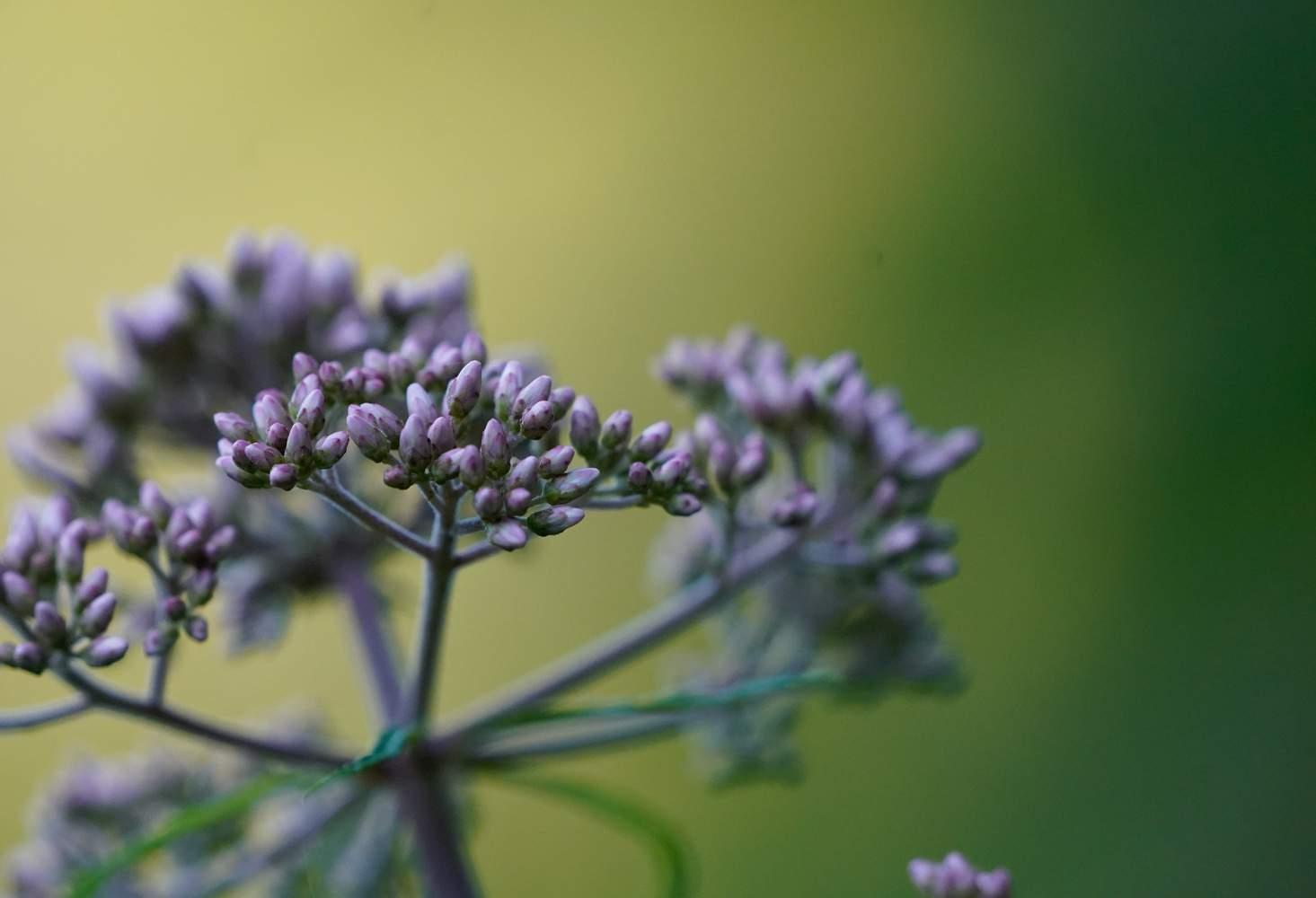
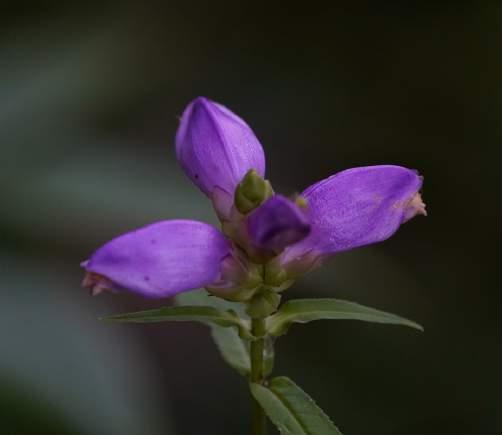

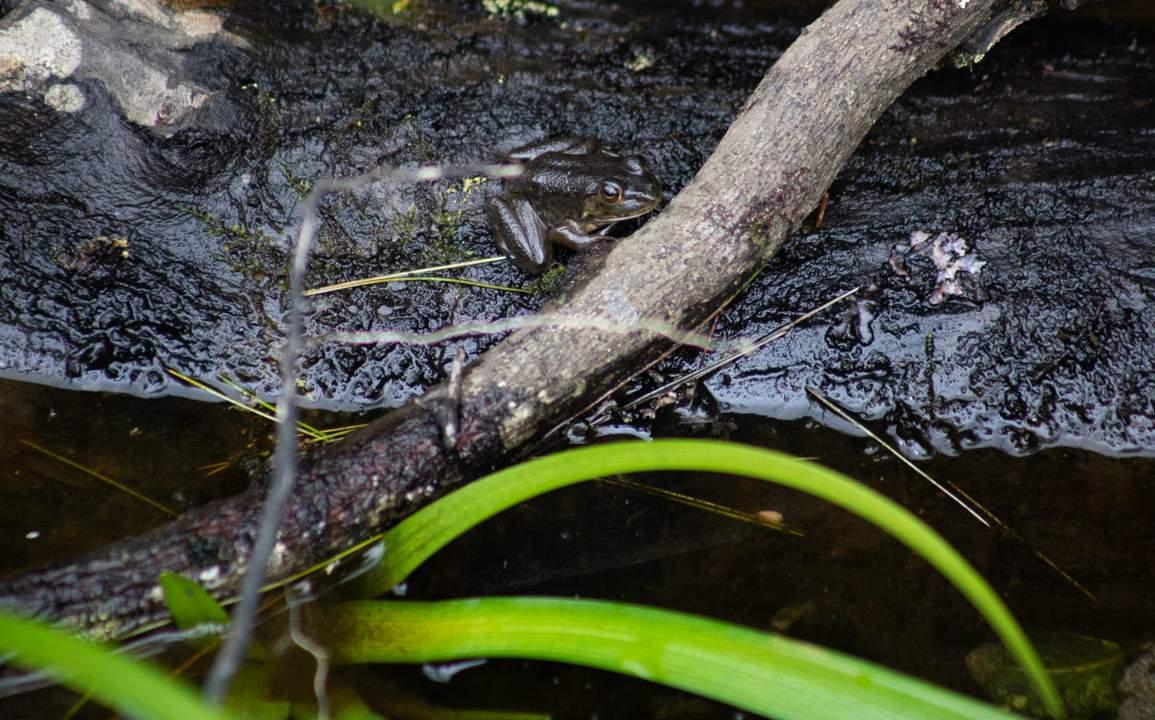
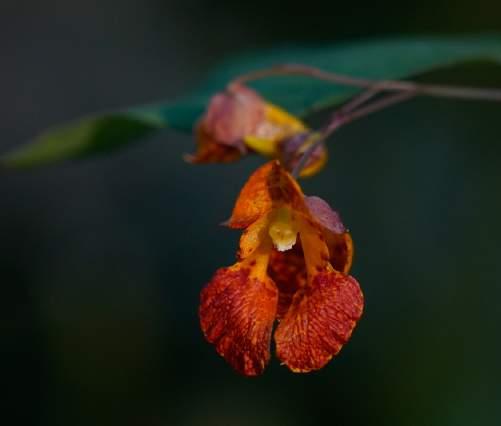

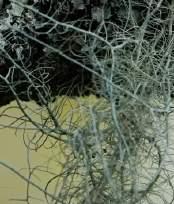

Highlands Biological Foundation F A L L N E W S L E T T E R 2 0 2 1
Contents: HBF Welcomes New President HBF & HBS by the Numbers Highlands Field Site Program 2021 Research Grants MAPS Bird Banding Nature Center News
Give Stimulating, promoting, & funding biological research & education in the southern Appalachians 2 6 5 N 6 t h S t | P O B o x 5 8 0 , H i g h l a n d s , N C 2 8 7 4 1 ( 8 2 8 ) 5 2 6 - 2 2 2 1 w w w h i g h l a n d s b i o l o g i c a l o r g
Honoring Legacies Ways to
HBF BOARD OF TRUSTEES
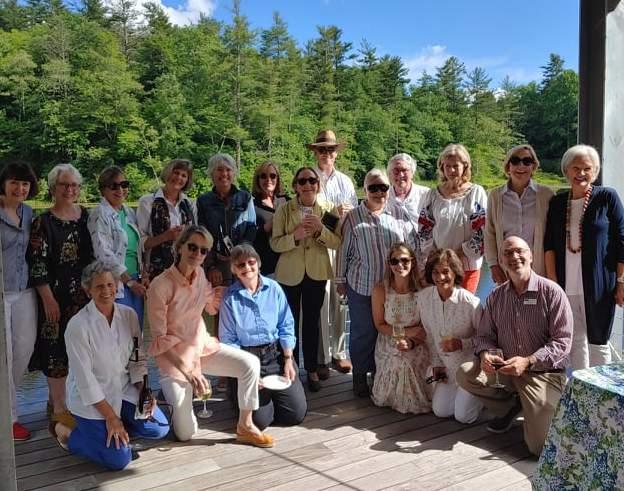
Tricia Allen
Lisa Armstrong
Linda Barlow
William Clarkson, Secretary
Kimberly Coward
Ruth Edwards
Monte Gaillard
Greg Gregory
Julia Grumbles, Past-President
Marianne Jenkins
Cathy Jones
Frank Langford
David Martin
Melanie Mauldin
James Milby
John Mitchener, Vice President
Frances Oakley
Amy Patterson, Treasurer
Karen Patterson
William Reeves
Vernon Skiles
Alex Smith
Carol Stewart
Jennie Stowers, President
Sarah Morgan Wingfield
HBF STAFF
Charlotte Muir, Executive Director
Paige Engelbrektsson, Education Specialist
Winter Gary, Communications & Events Coordinator
Sonya Carpenter, Project Coordinator
Holly Theobald, Naturalist
Katelyn Williams, Naturalist
TURNING OVER A NEW 'LEAF'
On June 30th, the Highlands Biological Foundation (HBF) celebrated the passage of a legacy during our annual membership meeting Julia Grumbles wrapped up 10 years of service as HBF’s Board President and entrusted the position to longtime HBF supporter, Jennie Stowers We are so excited to have Stowers fill this role as we enter a new chapter, and we are grateful to have Grumbles remain on our Board as Past-President.
Come One, Come AllLet's Celebrate Fall!
JENNIE STOWERS, PRESIDENT, HBF
Things are great with HBF! So far, 2021 has been an overwhelming success We continued our tradition of the Zahner Conservation Lecture Series, held 15 nature camps, welcomed over 10,550 visitors to the Nature Center, celebrated our 7th Oyster Roast, and hosted our most successful fundraiser to date - the Faraway Soirée at the home of Julia and Bill Grumbles HBF has invested more this year than ever before into research on the Highlands Plateau through our funding of the Institute for the Environment program and additional research grants This summer, we especially enjoyed our newly-completed North Campus The pollinator garden was full of buzzing insects and incredible blooms We conducted our camps, education programs, garden tours, and more from the John “Sto” Stowers Teaching Pavilion
As one passerby told me as she walked along the lake one beautiful summer afternoon, “This is just paradise.”
I couldn’t agree more
These efforts will continue into fall with help from our first ever fall Naturalists We have added two additional educators to our team to help us serve even more of our community with high quality environmental education programs We hope to see you throughout the upcoming weeks as we host our fall HBF Book Club, weekly Autumn Ambles, Pollinator Programs with Sonya Carpenter, Halloween’s Enchanted Forest and Ghostly Garden, and our inaugural Carpenter Lecture featuring Dr. Katharine Wilkinson, a leader at the forefront of the climate movement As you read this newsletter, you will see the many things you made possible this summer and catch a glimpse of what is to come this fall
After years of serving on the HBF Board of Trustees, this summer marked my first season as Board President I am extremely grateful for all you have done to support our mission and overall growth as an organization
Up & Autumn! You Won't Want to Miss These Fall Programs: 9/30 - 11/18: HBF Book Club 10/19: Nature 101 - BearWise 10/21 & 10/28: Autumn Amble Tours 10/12 & 10/26: Pollinator Program w/ Sonya 10/20: Travel Talks w/ Dr Jim Costa 10/22: Carpenter Lecture 10/26: Enchanted Forest 10/29 - 10/31: Ghostly Garden 11/1 & 12/6: A Garden in Every Season 11/16: Nature 101 - Rock n ' Roll For program details such as timing & registration, please visit highlandsbiological org 2
12
9
Zahner Conservation Lectures hosted by HBF


80
More than inches of rain recorded by HBS's weather station (so far)!
Highlands Field Site students studying at HBS this fall volunteers continue to graciously care for the Highlands Botanical Garden
14
More than visitors explored the Nature Center
2021 BY THE NUMBERS
10,550
6 11
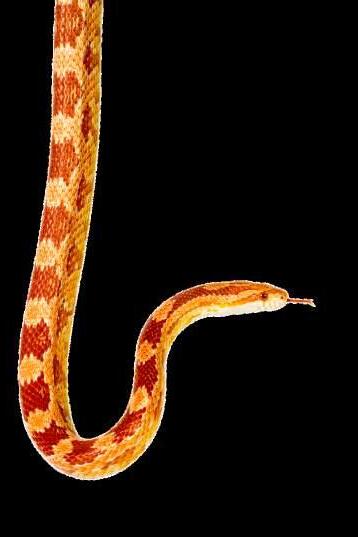
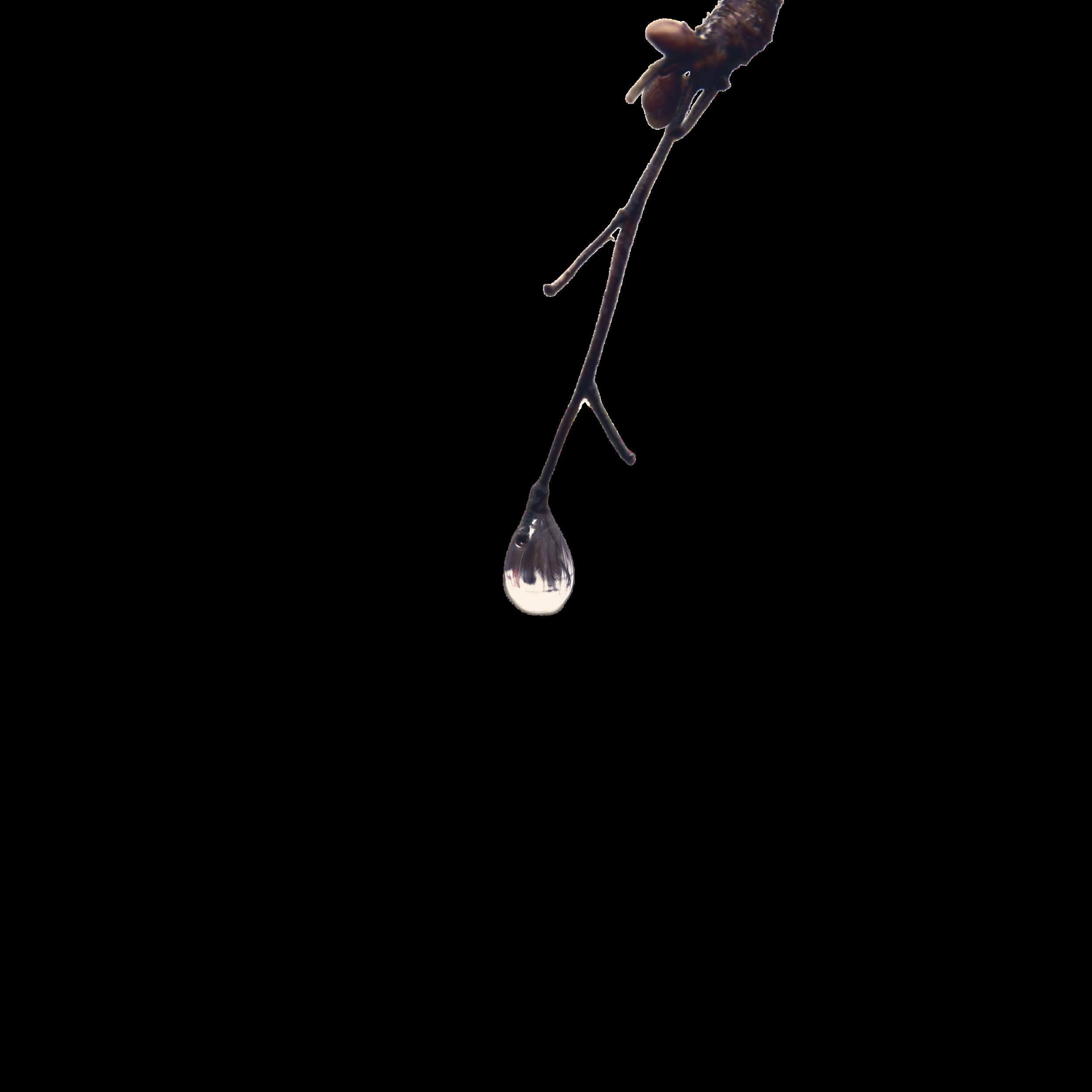
114 15 campers attended at least 1 of our Nature Camps
More than
30
academic courses & workshops held at HBS researchers resided at HBS
148 birds analyzed at HBS as part of the MAPS bird banding station funded by HBF
50
new specimens added to HBS's herbarium collection were all different Sphagnum mosses!
30
426
of which individuals reached through HBF's Nature Center outreach programs
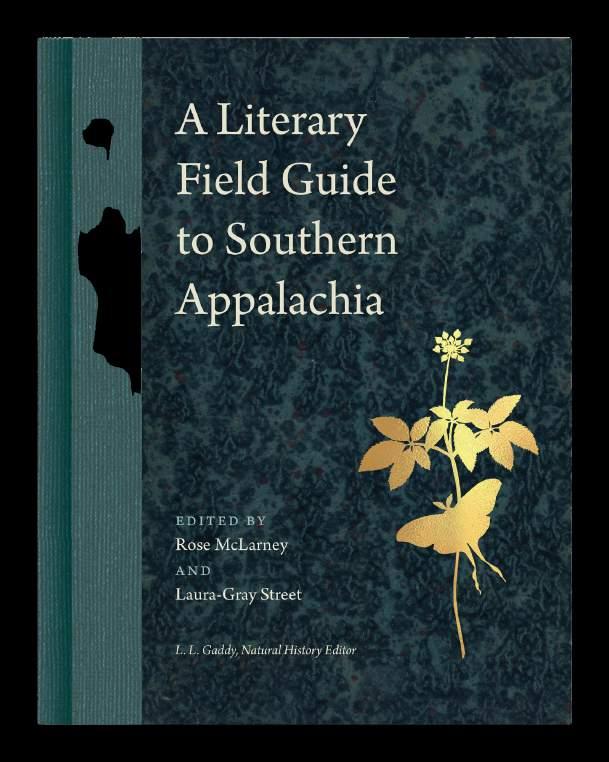
3
Highlands Field Site Students Hit the Ground Running
at HBS!
DR RADA PETRIC, DIRECTOR, UNC-CHAPEL HILL'S INSTITUTE FOR THE ENVIRONMENT AT THE HIGHLANDS FIELD SITE
I am so thrilled to join UNC-Chapel Hill as the new Director of the Institute for the Environment at the Highlands Field Site (HFS). In my new role, I hope to implement an educational program that will train future leaders by providing individuals with the fundamental knowledge and skillset to tackle and solve major environmental challenges My goal is to develop multidisciplinary collaborations, partner with both public and private entities, and engage our community to improve the environment This semester, we are absolutely ecstatic to have 12 talented and motivated UNC-Chapel Hill students join our HFS program
Overall, the students are exploring how humans interact with their environment in the southern Appalachian region, and they are using various
Follow their journey on Instagram! @highlandsie21 PLUS, see their final project presentations on 12/9! Stay tuned to highlandsbiological org for details
tools to measure, understand, and communicate those impacts. With our applied and integrative approach of field site courses, this year the student Capstone project focuses on working as a team to conduct and present research that addresses environmental

pollution, specifically microplastics, in the Chattooga River and its watershed. Additionally, each student is participating in an internship opportunity to gain one-on-one research experience. Please see below to learn more about the students' fall internship projects.
Vy Pham & Rachel Lopez
Vy and Rachel are studying the color difference between the two phenotypes of male Blue Ridge Two-lined Salamanders using the photo mark recapture method. The goal of the project is to understand how color differences affect the mating opportunity of each male type. They will use programming techniques to analyze the colors of the two-lined salamanders.
BLUE RIDGE TWOLINED SALAMANDERS BATS

Noa and Rachel are working to understand if there is a correlation among water quality, insects, and insect-eating bats along an urbanization gradient throughout the region. Once a week, you can spot them and their light trap collecting insects at lakes and ponds near you! They are also using an acoustic recorder to sample these sites for bat echolocation calls This way, they can gauge the effect of urbanization on the 14 regional bat species near and dear to our hearts
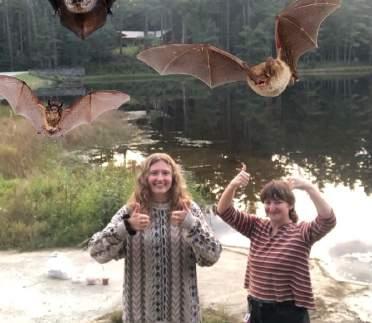
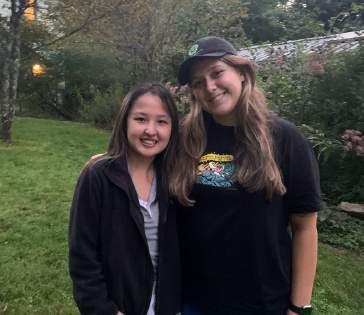 Mentor: Dr. Todd Pierson, Kennesaw State University
Mentor: Dr. Rada Petric, UNC-Chapel Hill
Noa Meiri & Rachel Maunus
Mentor: Dr. Todd Pierson, Kennesaw State University
Mentor: Dr. Rada Petric, UNC-Chapel Hill
Noa Meiri & Rachel Maunus
4
DENDROCHRONOLOGY OF OLD GROWTH HEMLOCKS
Gus Winiker & Scout Allen
Scout and Gus are examining Eastern and Carolina Hemlocks through a dendrochronological lens These students are coring hemlocks around the Highlands Biological Station and Devil's Courthouse They will scan the prepped and finished cores to date each tree and test hypotheses relating to climate change, human impacts, and the invasive wooly adelgid ripping through hemlock populations
Mentors: Joel Scott & Dr. Chris Oishi, USDA Forest Service, Coweeta Hydrologic Laboratory
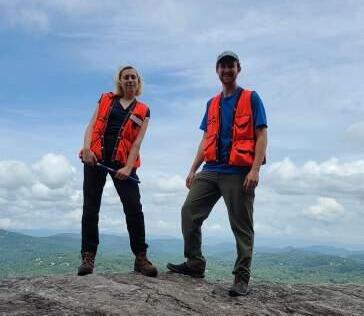

MACRO-PLASTICS & TRASH
Grace and Chloe are analyzing macroplastic detection in mountainous terrains There is a significant amount of research concerning microplastics but not much information concerning the sources and effects of larger pieces of trash (macroplastics) released into the environment These students will be analyzing the results of simulated trash cleanups as well as public clean-ups to determine a detection probability for macroplastics They will then apply these plastic pickup accuracy percentages to real-life cleanup efforts in order to better inform public cleanup initiatives
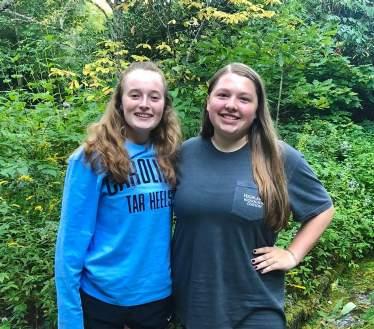
NORTHERN SAW-WHET OWLS
Daniela Zarate & Hannah Obenaus

Daniela and Hannah are surveying habitats within a 10 m radius of nest boxes at different sites in southern Appalachia to see if habitat type affects site selection for Northern Saw-whet Owls. They are collecting data on nest box content, height, and orientation, tree type and height, canopy coverage, etc. They are also conducting playback surveys to determine the presence or lack of presence of owls in specific areas. If they are lucky and find an area with Northern Saw-whet owls, they will help with mist net trapping and owl banding. If possible, they will use feathers for isotope analysis to determine where the owl(s) came from.
Mentor: Mark Hopey, Blue Ridge Bird Observatory
COMMON MUDPUPPIES
Alex and Eva are conducting a survey of the Common Mudpuppy within Macon County The Common Mudpuppy is a completely aquatic salamander, distinguishable by its external red gills Currently, there is not much known about the distribution of this species within local rivers In September, these two searched for juvenile mudpuppies in leaf packs and woody debris piles Now, they are searching for adults in the middle of river channels
Mentors: Lori Williams, NC Wildlife Resources Commission & Jason Love, Highlands Biological Station
Mentor: Jason Meador, Mainspring Conservation Trust
Grace Kinder & Chloe Hall
5
Alex Hubbs & Eva Kinney
MEMBER-SUPPORTED RESEARCH GRANTS

For over 50 years, HBF has provided ‘Grants-in-Aid (GIA) of Research’ at the Highlands Biological Station (HBS), bringing graduate students and research scientists to Highlands from all over the country and abroad. This year ' s GIA recipients included Dr. Rada Petric, Director of HFS, and Lauren Whitenack, a former HFS student and this summer ' s MAPS bird bander. When you give to HBF, you invest in research projects that help us better understand the incredible biodiversity of this region. Learn about some of the 2021 research projects you contributed to below.

ENVIRONMENTAL EFFECTS ON THE BIOMECHANICS OF SEED EJECTION IN THE FRUITS OF HAMAMELIS VIRGINIANA

Walking by a witch hazel plant in the fall, you run the risk of getting shot by a seed Like other seed shooting plants, the witch hazel (Hamamelis virginiana) launches its seeds by slowly loading energy into a spring-like material that later recoils, expelling the seed like an arrow shot from a bow In the witch hazel, the spring is a hard structure surrounding each seed, called the endocarp, which deforms as the fruit dries. At a critical point, the endocarp recoils and rapidly pinches on the seed, shooting it out at velocities of up to 12 m/s
I am studying witch hazels to probe a tradeoff that affects all seed shooting plants: the tradeoff between seed size and seed ejection velocity During its development, the fruit invests resources into the seed and the spring that launches the seed Larger springs may store more energy, increasing ejection velocity. Larger, heavier seeds decrease ejection velocity but may contain more provisions for the embryo Therefore, the interplay between seed mass and endocarp mass affects ejection velocity and potentially dispersal distance.
I am now investigating if the environment where the plant developed affects the ratio of seed mass to endocarp mass So far, I have measured the seed mass, endocarp mass, and seed ejection velocity of witch hazel fruits growing in Durham, NC. However, H. virginiana can also be found at the much higher elevations of Highlands, NC I am currently collecting the same dataset from fruits around the Highlands Biological Station.
JOSEPH R. BURGER ASSISTANT PROFESSOR UNIVERSITY OF KENTUCKY
Predicting shifts in species and ecosystem ranges is important to inform decision-making on a range of pressing environmental issues including biodiversity conservation in the face of climate change. Over time, the southern Appalachians have experienced latitudinal and elevational shifts in vegetation types, creating dynamic archipelagos of naturally fragmented ‘islands’ of spruce-fir ecosystems now restricted to the highest peaks. To forecast which species will remain in a patch, which will migrate through areas between them, and which are likely to be locally extirpated, scientists need to consider not only their suitable habitats but also the environmental history of the region and species’ traits like body size and temperature. Yet, understanding the origins, dynamics and future distributions of fragmented ecosystems, and mountaintop populations remains a challenge
This research combines biodiversity surveys and new computational models to forecast dynamic montane landscapes in space and time We apply it to vertebrate communities associated with high-elevation spruce-fir of southern Appalachia. To date, we have identified 12 high elevation habitat ‘islands’ of spruce fir forests. Through initial literature review, field surveys, consultation with regional experts and community science data, we have begun to digitize the distributions of 15 breeding birds plus 12 mammal and 6 salamander species restricted to high elevations of the southern Appalachians. We are currently using these data to develop computer models of future projections under climate change scenarios in order to inform conservation priorities of mountaintop biodiversity in the southern Appalachians
 JUSTIN JORGE PH.D. STUDENT DUKE UNIVERSITY
JUSTIN JORGE PH.D. STUDENT DUKE UNIVERSITY
BIOGEOGRAPHY & CONSERVATION OF SOUTHERN APPALACHIAN MOUNTAINTOP "ISLAND" BIODIVERSITY
6
This figure demonstrates how Jorge utilizes high speed cameras to record the "ballistic firing" of witch hazel seeds for his research!
ARTHROPOD ABUNDANCE & PHENOLOGY DURING SONGBIRD BREEDING SEASON AT MAPS BANDING SITES IN WESTERN NORTH CAROLINA

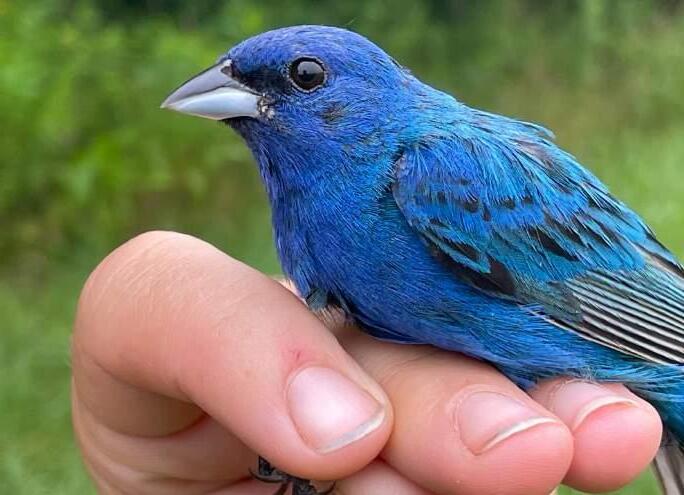
LAUREN WHITENACK
PH.D. STUDENT
UNIVERSITY OF NEVADA RENO
Food resource availability during breeding season is critical for animals to survive and successfully reproduce When food resources become scarce, survival rates and breeding success may decrease, eventually threatening the persistence of a population or species Many songbirds rely on arthropods (insects and spiders) during breeding season, especially soft-bodied insect larvae such as caterpillars, to feed their young. Since insect populations are seasonal and cyclical, and the timing of emergence of insect taxa varies annually, one would expect songbirds to want to synchronize their breeding timing with peak insect abundance.

Data on insect numbers during breeding season is lacking broadly, and more data is needed to assess how phenology* and abundance change over small timescales (seasonally) and over climate change timescales, and how these changes might affect songbird populations. This summer, while I worked as a songbird bander for Blue Ridge Bird Observatory (BRBO), I also studied arthropod phenology and abundance at three of our Monitoring Avian Productivity and Survivorship (MAPS) banding sites in western North Carolina: Cowee, Kituah, and HBS.
I sampled arthropods using two methods: 1) Caterpillars Count! (CC!; www caterpillarscount unc edu) beat sheet sampling to collect foliage-dwelling insects and spiders; and 2) Malaise trap sampling to collect flying insects. Over the course of the banding season, I conducted 9 CC! surveys at each of the three MAPS sites, approximately once every 10 days in the afternoons after banding I found that the peak caterpillar abundance based on biomass per survey (mg) was June 24 for Cowee, June 23 for Kituah, and July 9 for HBS. According to the other two methods of calculating abundance, caterpillar abundance may have more than one peak at our sites: in mid-June, early July, and perhaps another in late July-early August at our lower elevation sites; and in early July and early August at HBS Cowee had more than double the total biomass of arthropods compared to the two other sites, and the greatest biomass of caterpillars (Figure 1). Additionally, I collected and identified a total of 1,353 arthropod specimens from 8 Malaise sampling windows at the three sites throughout MAPS season I will use these Malaise data to supplement CC! data, since beat sheet sampling is biased against flying insects
*Phenology: a branch of science dealing with the relations between climate and periodic biological phenomena (such as bird migration or plant flowering)
HBF's GIA program allowed Whitenack to start a Caterpillars Count! sampling program at HBS & other BRBO MAPS sites with the intention of establishing permanent study plots. Longitudinal data will be critical for understanding climate change effects on our WNC ecosystems HBS & BRBO plan to carry on this project in the future so that we can better understand food resource availability & songbird breeding success in the southern Appalachians
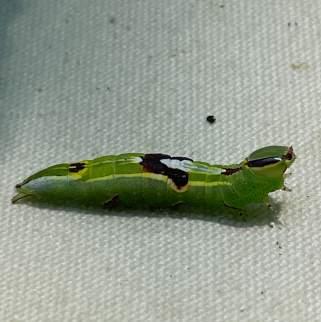
BRBO captured & collected data on 615 birds at their four MAPS locations this summer (Table 1) Most of the species caught rely on insects & spiders as an important food source during breeding season

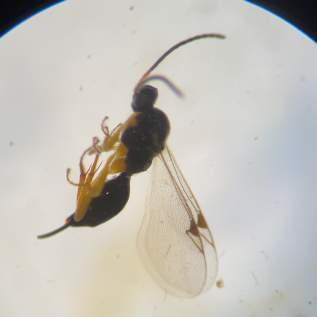
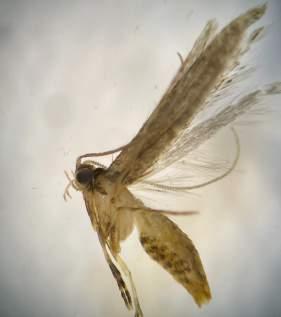
Indigo Bunting
Table 1
Figure 1
Moth sp
Saddled Prominent Caterpillar
7
Parasitic wasp sp

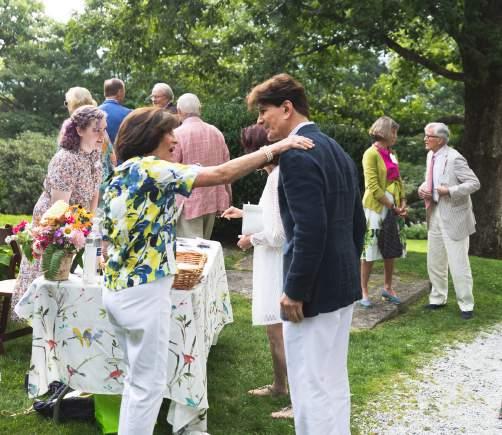
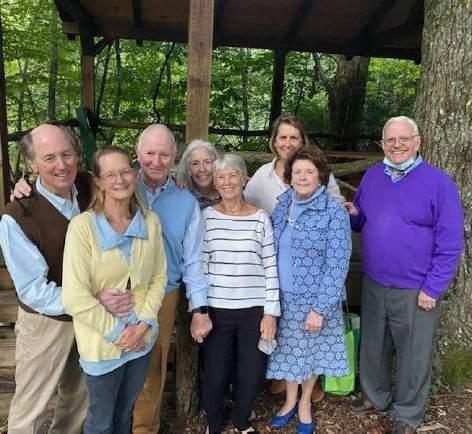
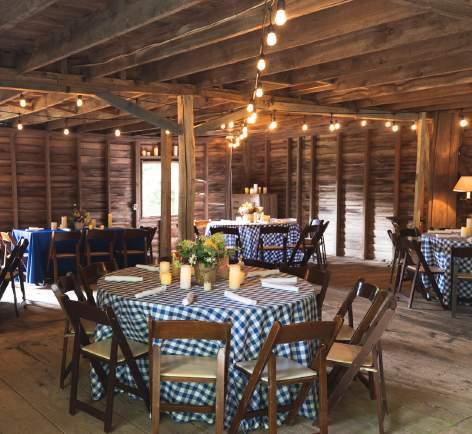
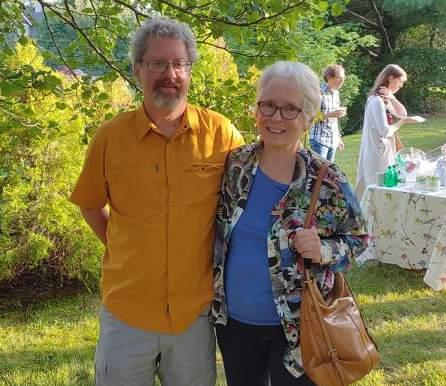



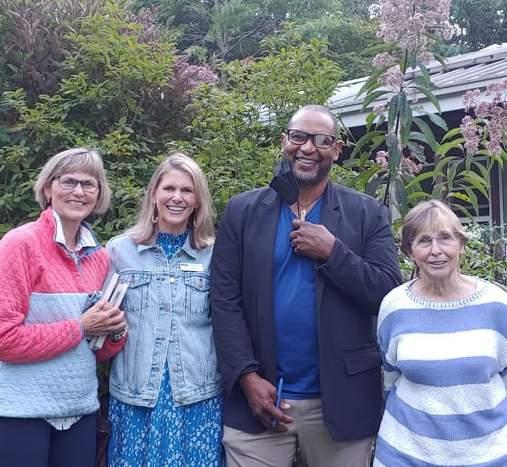
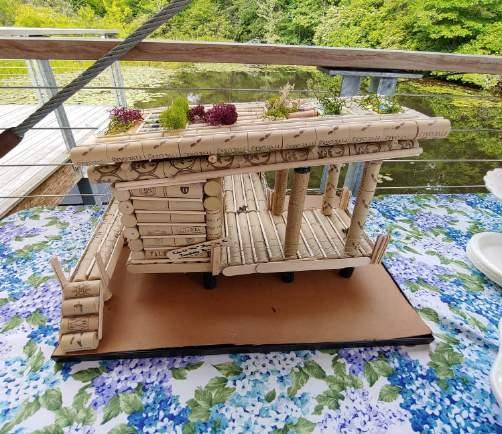

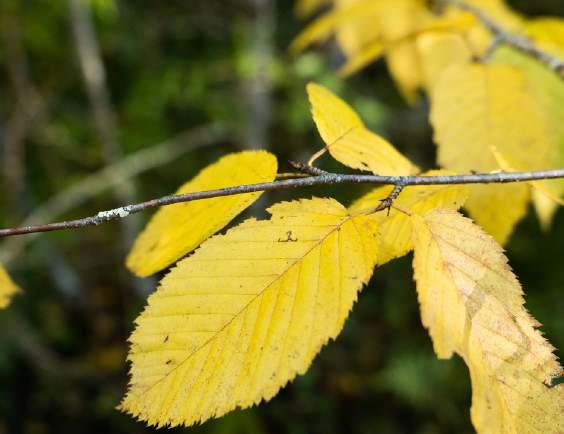
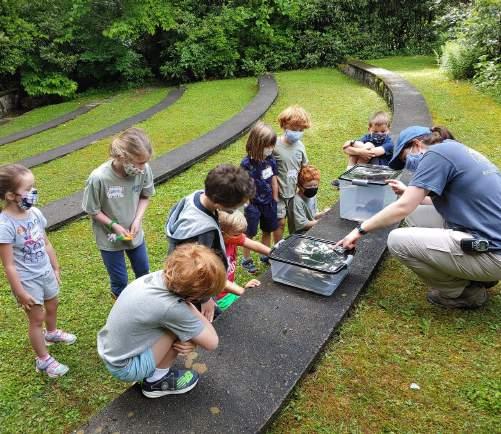

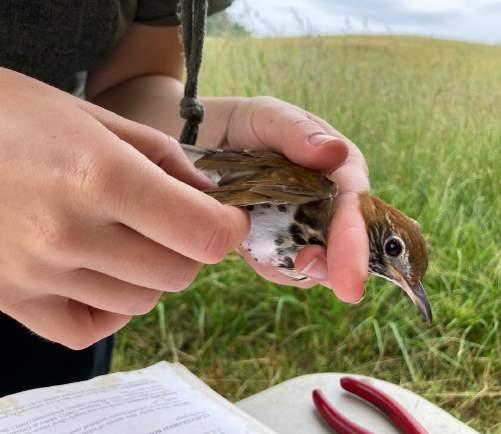

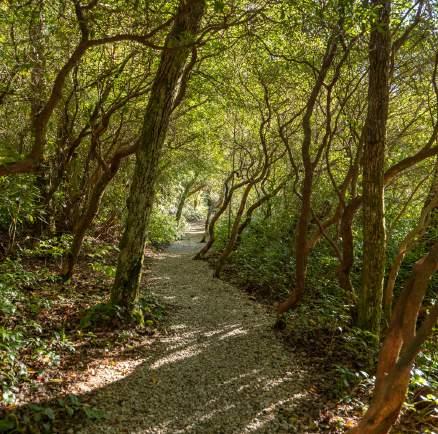



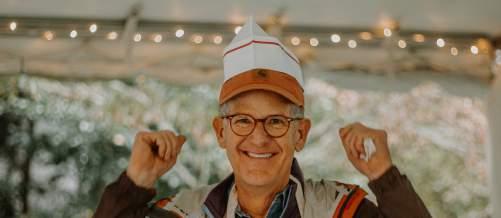
Snapshots 8
2021









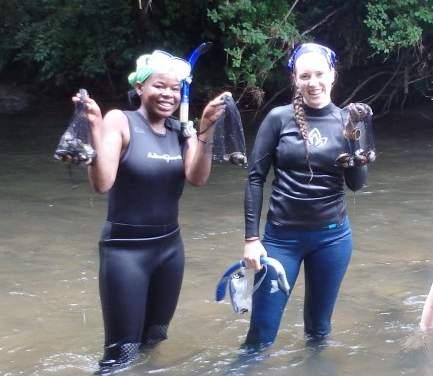
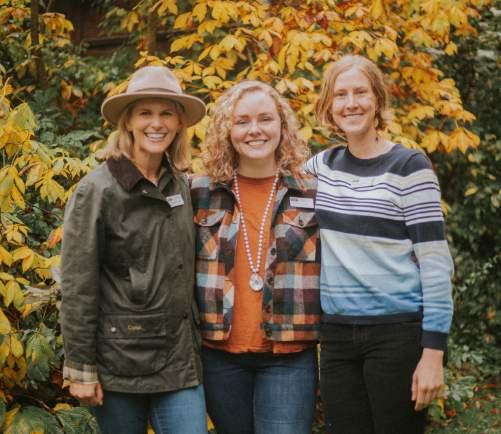
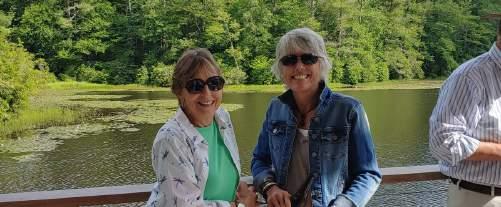

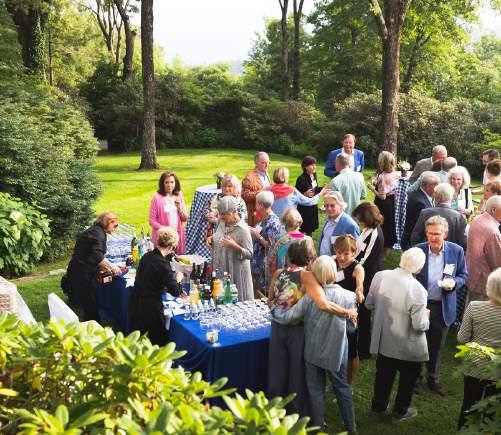



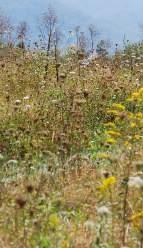


9
Nature Center News
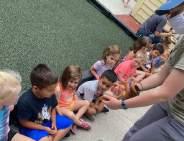
PAIGE ENGELBREKTSSON, EDUCATION SPECIALIST, HBF

Throwing open the doors to the Nature Center this year felt like my first summer here all over again: endless nerves, adrenaline, and excitement at welcoming the community into all that we had planned. In more normal times, we would have celebrated the 80th anniversary of the Nature Center opening in its current home, the Clark Foreman Museum In these times, simply being open was celebration enough
While it was impossible for me to meet each and every visitor, camper, and night hiker, I wish that I could So I'll take this moment, reflecting on 2021, to acknowledge how much we have to thank you all for.
To our visitors, I say: Thank you for your delight in discovering that we were open and for helping to keep our staff and most vulnerable visitors safe.
To our summer campers, I say: Thank you for trusting us to keep you healthy and happy, and for sharing your incredible joy in exploring our natural world.
To all of you, I say: Thank you for your patience, kindness, and endless support We wouldn't be here without you




Here's to this year, and to many more to come!
Did you know that HBF's Nature Center staff lead educational outreach programs off-site?!
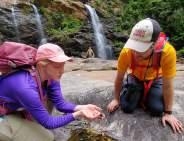
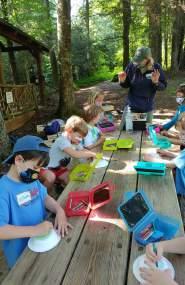
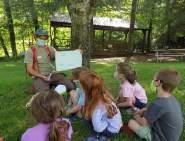
This year, our staff led programs for community organizations such as the Gordon Center Preschool, Methodist Church (Summer Camp & Afterschool) , Macon County Edventure Camp, Highlands Community Child Development Center, South Macon Summer Camp, Lonesome Valley, Highlands School Summer Camp, Boys & Girls Club of the Plateau, and more We're able to reach so many in our community thanks to supporters like you!
Two of our summer Naturalists just couldn't stay away!
Holly Theobold & Katelyn Williams haved returned to the Nature Center this fall to assist with educational programming & outreach That means we'll be able to offer even more for our community & beyond. See what these two have to say below:

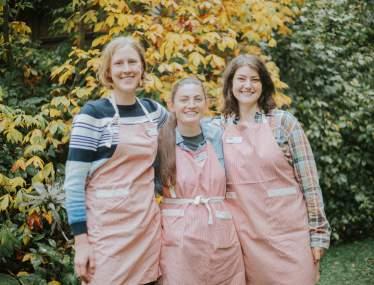

At first, I was drawn to the Biological Station by their integration of research and education. After working a summer here, I was thrilled to continue to be part of such an amazing team so dedicated to the care of the natural world It’s truly impressive how the staff here work together to create an atmosphere conducive to learning, research, and preservation. This fall, I’m looking forward to working with the HFS students to help them conduct their own research, to working at the Nature Center to create and implement environmental education programming, and to creating a geology collections case.
Hey Highlands! I'm Katelyn, one of the Naturalists Highlands Nature Center During the summer I faci summer camp groups for campers ages 4-14, connec the local communities through outreach programs, an in the Nature Center I was having so much fun work the public through hands-on experiences in and abou that when I was asked to stay throughout the fall, it wa YES! Speaking of fall, HBF has a lot of big plans W continue with our exciting outreach programs as well centered around the changing seasons including lea celebrations and festivals, and spooky holiday festivit Garden Come join the fun, see you there!
10
Honoring Legacies Honoring Legacies
HBF Raises More Than $69,800 for 'Julia Grumbles Fund'!
Honoring: Julia Grumbles, Former HBF President (2012-2021)

It's well known that HBF would not be what we are today without the fierce leadership of Julia Grumbles Some say that she and HBF have become synonymous During her tenure as President, we broadened our impact, expanded our reach, and thrived overall, even while faced with a global pandemic
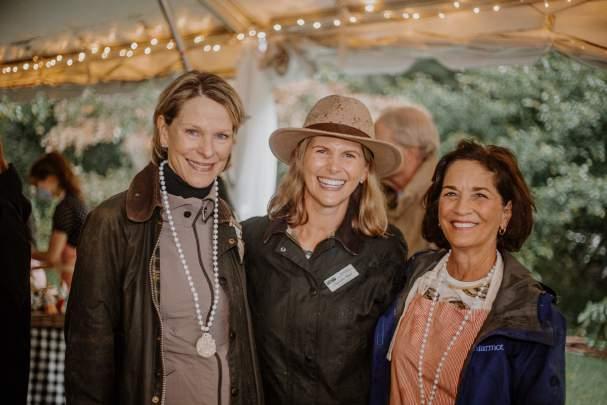
As Julia stepped down as President this summer, we sought to honor her years of service by creating a 'Julia Grumbles Fund' to further enhance the North Campus gateway, an area that Julia herself spearheaded as a gift for the community Thanks to YOU and our other unwavering supporters, we raised nearly $70,000 - further cementing Julia's HBF legacy.
HBF to Host Inaugural Carpenter Lecture!
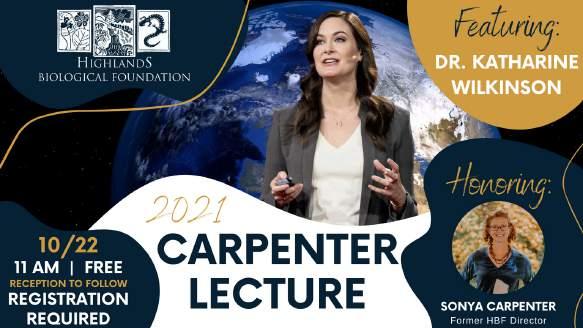
Honoring: Sonya Carpenter, Former HBF Director (2009 - 2018)
HBF’s inaugural Carpenter Lecture will feature Dr Katharine Wilkinson, a leader at the forefront of the climate movement. The Carpenter Lecture series honors HBF’s former director, Sonya Carpenter. Sonya led HBF for nearly 10 years and grew our organization and expanded our accomplishments immensely. As Highlands residents know, Sonya is a passionate advocate for the natural world with a focus on educating our community about the world around us.
Join us at the First Presbyterian Church of Highlands on Friday, October 22nd at 11 a.m. as we honor Sonya with an event that will bring our community together to explore how we too can be warriors against climate change. Reception to follow.

Register at highlandsbiological org
Dr. Wilkinson co-founded The All We Can Save Project & co-hosts the podcast A Matter of Degrees. Her books on climate include All We Can Save, The Drawdown Review, Drawdown, & Between God & Green. Time magazine named her one of 15 “ women who will save the world ”
 Julia Grumbles pictured with current HBF Executive Director & Board President, Charlotte Muir & Jennie Stowers
Julia Grumbles pictured with current HBF Executive Director & Board President, Charlotte Muir & Jennie Stowers
11

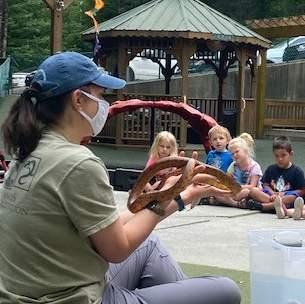
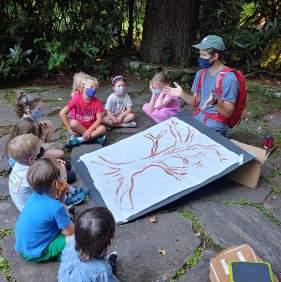

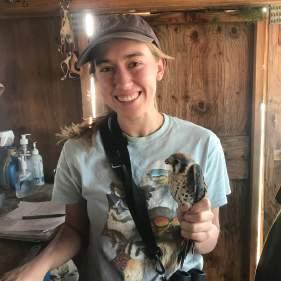
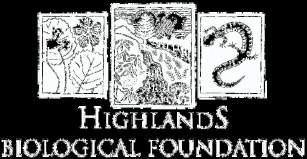

LeaveaLegacy thatwillinspirepresent& futuregenerationsto preserve&protectthe uniqueenvironmentofthe HighlandsPlateau Please rememberHBFinyourwill Send a stock gift Contribute through a donor-advised fund Introduce your family and friends to the Nature Center & Botanical Garden Use the enclosed envelope to send a gift Call our office to make a contribution Donate or set up a recurring donation online at highlandsbiological.org The Highlands Botanical Garden Community outreach & education Nature Center programming & summer camps Research in the southern Appalachians Your Contribution Supports: The Highlands Biological Station is a multi-campus center of Western Carolina University. Ways to Give: For additional giving opportunities or more information, please call (828) 526-2221. Photos courtesy of: Joseph Burger: page 6 Krystal Cutshaw-Cohen: pages 8, 9, 10, 11 Brock & Sherri Fenton: page 4 Winter Gary: pages 2, 8, 9, 10, 12 Rada Petric: page 4 Holly Theobald: page 10 Lauren Whitenack: pages 7, 8, 9, 12 Katelyn Williams: page: 10 Justin Jorge: page 6 Jason Love: page 9 Dylan Lytle: pages 1, 9, 10, 12 Charlotte Muir: pages 8, 10, 12 12 Are you getting our biweekly emails? Subscribe at highlandsbiological.org You can also follow us on social media: C O N N E C T W I T H U S ! Highlands Biological @highlandsbiostation @HighlandsBioFdn @highlandsbiologicalstation

















 Mentor: Dr. Todd Pierson, Kennesaw State University
Mentor: Dr. Rada Petric, UNC-Chapel Hill
Noa Meiri & Rachel Maunus
Mentor: Dr. Todd Pierson, Kennesaw State University
Mentor: Dr. Rada Petric, UNC-Chapel Hill
Noa Meiri & Rachel Maunus






 JUSTIN JORGE PH.D. STUDENT DUKE UNIVERSITY
JUSTIN JORGE PH.D. STUDENT DUKE UNIVERSITY



















































 Julia Grumbles pictured with current HBF Executive Director & Board President, Charlotte Muir & Jennie Stowers
Julia Grumbles pictured with current HBF Executive Director & Board President, Charlotte Muir & Jennie Stowers




